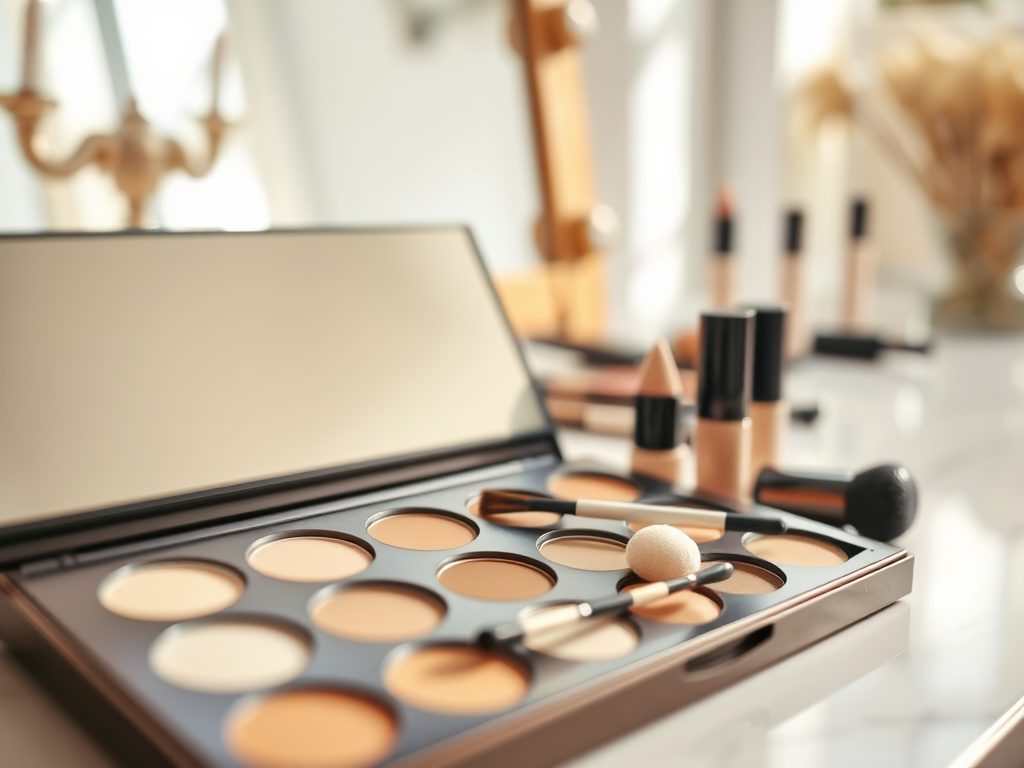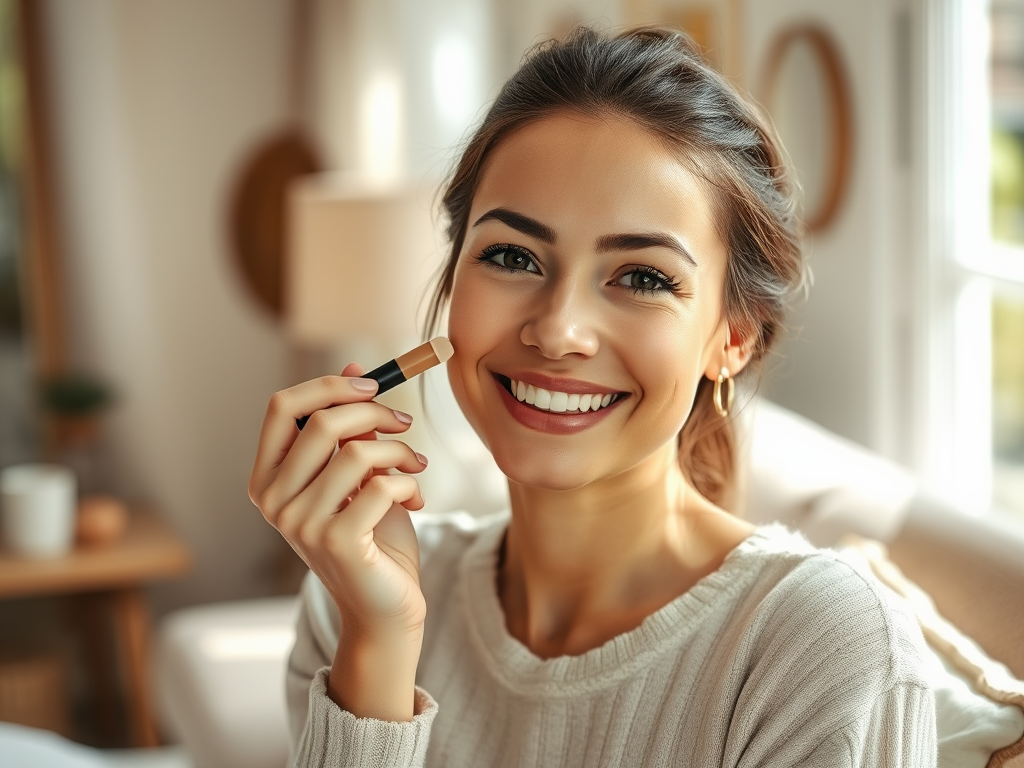In the world of makeup, concealer is one of the most versatile yet often misunderstood products available. Many beauty enthusiasts struggle with the art of application and blending, leading to uneven skin tones and highlighted imperfections. This guide aims to provide not just tips, but an insightful perspective on how to make concealer work best for your unique complexion. Understanding the nuances of blending is essential for achieving that flawless finish we’ve all come to admire. Whether you’re dealing with dark circles, blemishes, or redness, mastering these techniques can elevate your makeup game. Let’s dive deeper into the essentials of concealer application and explore how to blend like a pro.
Understanding Concealer

Concealer serves as a powerful ally in the beauty arsenal, offering the ability to mask blemishes, brighten dull areas, and provide an even canvas for further makeup application. But what sets it apart from foundation? While foundation is designed to even out the overall skin tone, concealer is targeted for specific problem areas. This is why understanding concealer’s purpose and properties is crucial for mastering its application. There are a variety of formulations available, each with its own unique texture and consistency, ensuring that there’s a perfect match for everyone. By learning how to effectively use this product, you can significantly enhance your overall makeup look.
Types of Concealers

Choosing the right type of concealer is the first step toward achieving a seamless appearance. Here’s a quick overview of the most common types of concealers and their best uses:
- Cream Concealer: Ideal for dry areas such as the under-eyes, providing hydration and coverage.
- Liquid Concealer: Great for everyday use, as it provides buildable coverage without feeling cakey.
- Stick Concealer: Perfect for on-the-go application, it offers good coverage for blemishes but should be used sparingly.
- Pot Concealer: This thick formula is excellent for covering heavy blemishes and addressing pigmentation issues.
Finding the perfect concealer shade involves more than a simple color match; it requires an understanding of color theory. You’ll want to consider your undertone—warm, cool, or neutral—as you decide on a concealer color. Aim to go one or two shades lighter than your skin for under-eyes and a shade that closely matches your foundation for other blemishes. Remember this helpful rule of thumb:
| Area | Recommended Shade |
|---|---|
| Under-Eyes | 1-2 Shades Lighter |
| Blemishes | Matches Foundation |
| Redness | Green Corrector |
Essential Tools for Application
Once you’ve chosen the right concealer, the next step is selecting the right tools for application. Brushes are excellent for precision and can help you blend seamlessly into the skin. Beauty sponges, on the other hand, can create a lightweight finish and are perfect for larger areas. Using your fingers can also be a practical approach, as the warmth from your fingers can help emulsify the product. Here’s a quick list of essential tools:
- Makeup Brush: Best for detailed application.
- Beauty Sponge: Provides a natural, airbrushed finish.
- Fingers: Great for quick touch-ups or applying directly to smaller areas.
Techniques for Application
Learning how to apply concealer effectively is as important as the product you choose. Various techniques can be employed for different areas of the face. For example, dabbing is often recommended for the under-eye area, while stippling works wonders for blemishes. Sweeping the product across larger areas can give an even glow. Each technique has its merits, and understanding when to use them can enhance your final outcome. Remember that less is often more; it’s easier to add additional coverage than to take away excess product.
Layering concealer rather than piling it on can prevent that dreaded cakey look. To achieve the best results, apply a thin layer, let it set, and then add more if needed. This not only enhances coverage but also allows the contours of your face to come through more naturally. By building up the product gradually, you maintain a more lifelike complexion. It’s important to stay patient and take your time in this process.
Specific Areas to Conceal
Certain areas of the face may require special techniques or products to achieve the best results. While blemishes generally respond well to heavier coverage, the under-eye area often needs a lighter touch to avoid creasing. Knowing what to focus on can dramatically change your makeup look.
- Under-Eyes: Use a creamy concealer and apply it in a triangle shape to illuminate.
- Blemishes: Opt for a thicker formula that matches your skin tone closely.
- Redness: A green concealer can neutralize red spots before layering with your regular concealer.
When tackling dark circles, it’s important to select a product that hydrates while offering coverage. Applying your concealer in a triangular formation instead of a straight line can brighten and contour the area. Utilize a lightweight formula with good pigmentation and consider using a color corrector if the circles are particularly severe.
Setting Concealer for Longevity
To ensure your concealer lasts throughout the day, proper setting is crucial. After application, lightly dust a translucent powder over the concealed areas. Not only will this help to minimize creasing, but it will also give a soft-focus effect that keeps your makeup looking fresh. Makeup setting sprays can also offer added longevity. Here are some quick tips for setting your concealer:
- Press powder lightly; avoid heavy application to minimize cakiness.
- Use a setting spray to lock everything in place.
- Consider using a damp sponge for setting powder for a flawless finish.
Conclusion
Mastering the art of concealer application requires practice, but with the right techniques and tools, the journey can be rewarding. By understanding the various types of concealers, learning how to apply and blend them effectively, and knowing what to focus on, you can create a radiant complexion that enhances your natural beauty. Remember, every face is unique, and what works for one person may not work for another—so keep experimenting until you find your perfect method.
Frequently Asked Questions
- What is the best way to apply concealer? The best way to apply concealer is through a tapping motion to blend out the product without disturbing the foundation beneath.
- Should I use a lighter concealer for under-eye circles? Yes, using a concealer that is one or two shades lighter than your foundation can help to brighten the under-eye area.
- How can I prevent my concealer from creasing? Setting your concealer with a translucent powder and avoiding excessive amounts of product can minimize creasing.
- Can I use concealer without foundation? Absolutely! Concealer can be used on its own for a more natural look, focusing on areas that need coverage.
- What ingredients should I look for in a concealer for sensitive skin? Look for fragrance-free and hypoallergenic formulas that contain soothing ingredients like aloe or chamomile.